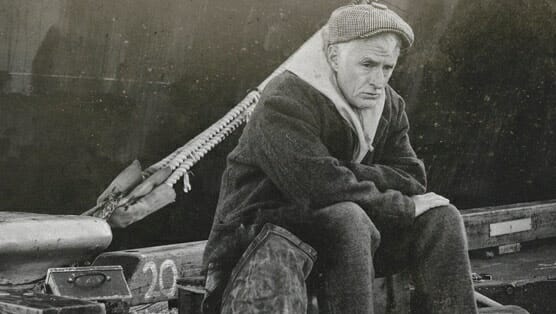Documentary Now: “Kunuk Uncovered” (1.02)

IFC made the decision to pull this week’s originally scheduled Documentary Now episode, “DRONEZ: The Hunt for El Chingon,” after two Virginia journalists were killed on air. After inadvertently watching that episode, we know that IFC absolutely made the correct choice to air “Kunuk Uncovered” in its place (and we’ll talk more about it in next week’s review).
The series set the bar high last week with its debut, “Sandy Passage,” a riff on the Maysles’ brothers documentary Grey Gardens. While “Kunuk Uncovered” didn’t quite reach the same heights in terms of laughs, the episode featured a depth in storytelling that’s remarkable for a half-hour comedy.
The episode riffed not only on director Robert J. Flaherty and his 1922 silent film Nanook of the North—considered by many as the first feature-length documentary—but also Nanook Revisited, a 1990 follow-up film that returned to Flaherty’s old filming locations in the Canadian arctic. The latter film showed that Flaherty’s documentary might not have told an entirely truthful story. He staged some of the film’s most famous scenes and shots and misrepresented the Inuit people and culture of the region and his relationship to them.
“Kunuk Uncovered” opens with grainy black-and-white footage of a solitary Canadian Inuit (Armisen) walking alone through the tundra, and a voiceover that introduces audiences to William H. Sebastian’s 1922 classic film. Take a moment to look closely at the Kunuk the Hunter movie poster to read its ridiculous sounding subtitle, “A Story of Truth & Beauty in the Actual Tundra”—a play on Nanook’s own, “A Story of Life and Love in the Actual Arctic.” It’s that level of detail that we admire in Documentary Now. Creators Fred Armisen, Bill Hader and Seth Meyers (who wrote this week’s episode) aren’t afraid to show us history and truth, and then skewer them for their—and our—amusement.
The episode examines the relationship between filmmakers and subjects in documentary cinema and debates whether films with staged scenes can be truly called documentaries. It’s pretty heady stuff for a comedy, but in this episode, some of the biggest laughs come from the cleverly appointed details, from the old-time photographs, letters and newspaper clippings to “lost footage” from the original film.
-

-

-

-

-

-

-

-

-

-

-

-

-

-

-

-

-

-

-

-

-

-

-

-

-

-

-

-

-

-

-

-

-

-

-

-

-

-

-

-








































